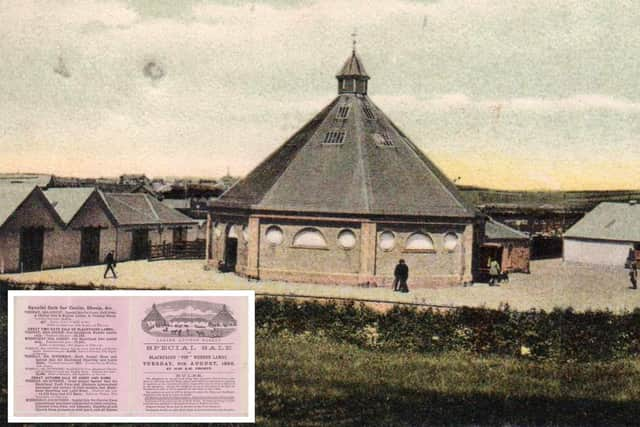Lanark Auction Market has a 750-year pedigree of bringing prosperity to the town
and live on Freeview channel 276
There are not many businesses that can claim such an impressive lineage.
We do not know exactly the year when markets started up in Lanark but the name Lanark is a clue. It is derived from Lanarch/Lanerc which is an Anglo Norman word meaning “the place of the woolworkers”.
Advertisement
Hide AdAdvertisement
Hide AdThese early markets were run by the monks of St Mary of Dryburgh who helped to develop sheep farming in Clydesdale.


The monks of the Tironesian Abbey of Kelso, who had a priory at Lesmahagow, were also involved in this business, as well having a town house in Lanark.
It was the success of sheep farming and other trade that led Lanark to become one of the Council of Four Burghs in 1386.
Lanark continued to be an important market town though the development of New Lanark and the growth of weaving led to a different direction in the town’s trade.
Advertisement
Hide AdAdvertisement
Hide AdHowever, agriculture still predominated and in the early 1820s, a meal market and hotel was built at the corner of the newly built Hope Street.
This building still stands, located at 2-4 Hope Street. Here the partnership of John Lawrie and his nephew John Symington was formed.
It was not long before the Hope Street premises became too small and Lawrie and Symington moved out to its own site in Ladyacre, now the site of the retail park, in 1867.
The firm was quick to appreciate the advantages of rail links and by 1890 it was common to see over 5000 sheep pass through the market in two days! It was at this stage that the stone auction ring was built, which still stands in the Retail Park.
Advertisement
Hide AdAdvertisement
Hide AdOriginally there was a further auction ring built from wood; unfortunately, all that is left is the iron framework in a council store. It was supposed to have been restored … but that is another story.
Horse sales were first tried in the area near Morrison’s supermarket, known as the Horsemarket, in 1879. They were not a great success initially.
However, all that changed when the Elliots took over the business in 1886 and by 1911 they had become a three-day event. The Clydesdale Horse Sales were a specialty with one horse selling for over 4000 guineas, the modern equivalent of just over half a million pounds!
William Elliot was succeeded by Walter Elliot who was uniquely both an MP and a Lord Cornet at the same time. Walter played a very important part in the cabinet of Winston Churchill, being Minister for Agriculture.
Advertisement
Hide AdAdvertisement
Hide AdIt was in his time that the various agricultural marketing boards were formed which provided great stability to the marketing of food and made sure that farmers had a stable income. The demise of this very sensible system had a very deleterious effect on the farming industry.
In 2004 the market moved out to its present site by Lanark Racecourse where it still continues to provide its services. It was here the King performed his last duty as Prince of Wales when he unveiled the monument to the Clydesdale Horse.